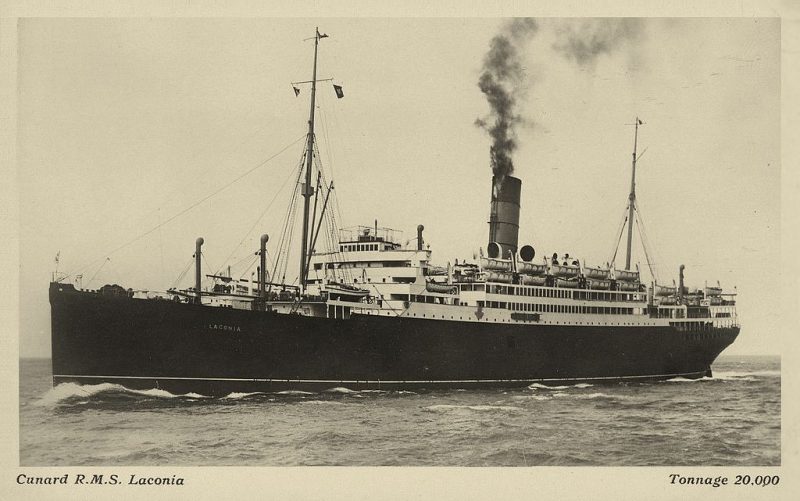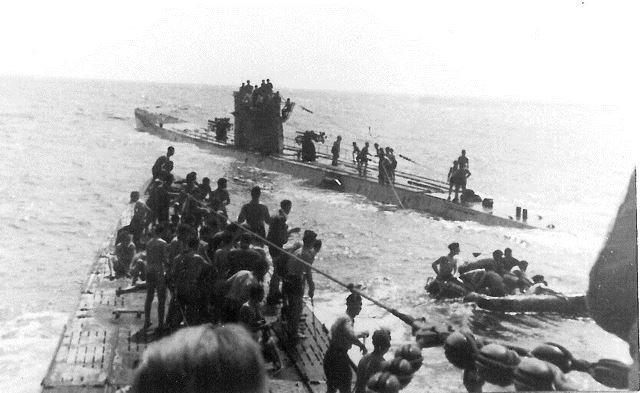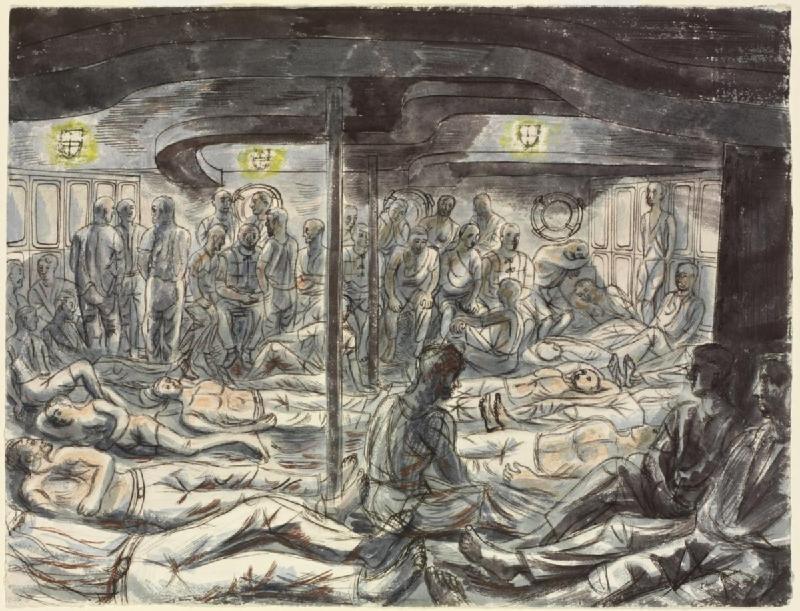The RMS Laconia was a civilian ocean liner built in 1921 as a successor of the 1911-1917 Laconia. Laconia made her maiden voyage from Southampton to New York on 25 May 1922.
When World War II broke out, the ship was commandeered by the British Government for use as a troopship and fitted with eight six-inch guns.
The RMS Laconia was involved in the so-called “Laconia incident” that happened in the autumn of 1942. It’s one of the fascinating World War II stories that deserves your attention.
The ship was on its way from Egypt to Britain, but because the Mediterranean was largely controlled by the Axis powers, they had to go the long way round Africa. At the beginning of September 1942, the boat reached Cape Town before sailing up the West African coast.

2,700 people were aboard: 1,800 of them were Italian prisoners of war guarded by 180 Polish troops, 268 British soldiers and 80 civilians (women and children), with dozens of injured British soldiers and other military personnel.
On 12 September 1942, RMS Laconia under the command of Captain Rudolph Sharp was around 900 miles south of Freetown, and 250 miles north-east of Ascension Island. Since RMS Laconia was sailing without any convoy and not many guns it was an easy target for a U-boat attack.
At this time, German U-boats were patrolling the Atlantic to disrupt supplies being sent to Britain from the United States. In the evening of 12 September 1942, the submarine U-156 spotted RMS Laconia and they immediately thought that RMS Laconia was an armed troopship and not passenger ship.
The German U-boat, under the command of Captain Werner Hartenstein, fired two torpedoes into RMS Laconia, one at 8.07pm, the other 30 seconds later. This is where one of the great forgotten stories of the Second World War begins.

Several hundred were killed instantly and when U-156 surfaced to capture the senior officers, Captain Werner Hartenstein realized that there were around 2,000 survivors in the water and most of them were Italian POWs. What Captain Hartenstein did next would surprise everyone. He immediately ordered rescue operations and proved that he was not just another ruthless Nazi killing machine, but a true war hero.
There were too many people waiting to be rescued and Captain Hartenstein requested help from Submarine Command in Germany. Admiral Donitz responded to his request and sent two nearby U-Boats to the scene.
This wasn’t the only thing that Captain Hartenstein did. He broadcasted the following message in the clear and in English for additional help from anyone in the area:
“If any ship will assist the ship-wrecked Laconia crew, I will not attack providing I am not being attacked by ship or air forces. I picked up 193 men. 4, 53 South, 11, 26 West. – German submarine.”
On September 15, 1942, two German and one Italian submarine joined in the rescue effort. But the British were skeptical and decided to pass on the request for help to the Americans. On September 16, a B-24 spotted the U-Boats and American officer Captain Richardson ordered them sunk.

The Americans dropped bombs and one of them fell among the lifeboats and the U-Boats ordered the survivors into the water and dove again to safety. During that day, French vessels picked up around 1,500 passengers, but unfortunately, more than 1,000 people did not survive.
The events that took place during this period of World War II became known as the “Laconia incident.” This incident made German Admiral Donitz issuing the “Laconia Order” – instructions not to rescue survivors in future as it jeopardized the safety of German crews. Before the incident, it was customary for surface vessels of most navies to pick up survivors.
Captain Hartenstein was killed in action on March 8, 1943. He would be remembered showing great courage and humanity during the “Laconia incident.”
